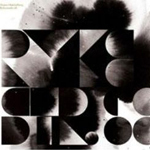|
|
 |
Dusted Reviews
Artist: Hanne Hukkelberg Album: Rykestrasse 68 Label: Nettwerk Review date: Jun. 4, 2007 |

|
|
|
 |
Rykestrasse 68 is Hannah Hukkelberg’s second album; it builds on the strengths of her debut Little Things, but is a richer, more mature album. Rykestrasse itself is a street in Berlin, where Hukkelberg lived for six months, and the album opens with the track “Berlin” (not the Lou Reed song), which sets the tone for much of what follows. Its spare instrumentation – just bass and glockenspiel – and steady rhythm do nothing to detract from the voice.
Hukkelberg’s voice is light and versatile, moreso than Bjork’s, although one can hear why the two have been compared; Hukkelberg shares some of Bjork’s gamine qualities and her sense of otherness. Although the music is not jazz – its rhythms and melodies are more straightforward – Hukkelberg has the instincts of a jazz singer, always likely to throw in a passage of scat or an unexpected vocal embellishment. As well as singing, she plays an awesome array of instruments, both conventional and less so (chandelier, kettles, cutlery…). She is also joined by some of Norway’s finest musicians; the dozen-plus players who are credited belie the overall sparseness of the soundscape.
Many of Hukkelberg’s songs are memorably melodic and lyrically intriguing. “A Cheater’s Armoury” is as jazzy as any song here, but also has a catchy chorus. The soaring vocal passage that opens “Fourteen” sounds as if it could have been sung by a distracted Disney-cartoon princess, at once both casual and enchanting. It leads into a complex and dramatic “The North Wind,” characterized by overlaid recitations, sound effects, naïve vocals and delicate music-box melodies; the inclusion of theremin is the final ingredient needed to make the piece truly unsettling. A magical song.
The only non-original is a cover of The Pixies’ “Break My Body,” a version that is slower, sparser and more emotional than the original. It is followed by “Ticking Bomb”, a track that amply demonstrates Hukkelberg’s imaginative skills. Lyrically it is about a terrorist bomb, written from the bomb’s point of view; musically, it is dominated by a metronomic rhythm – literally that of a ticking bomb – plus background sounds such as breaking glass. The music builds tension until one is expecting a final explosion, maybe even hoping for it; but the track ends with only silence, leaving the listener hanging.
By John Eyles
|







